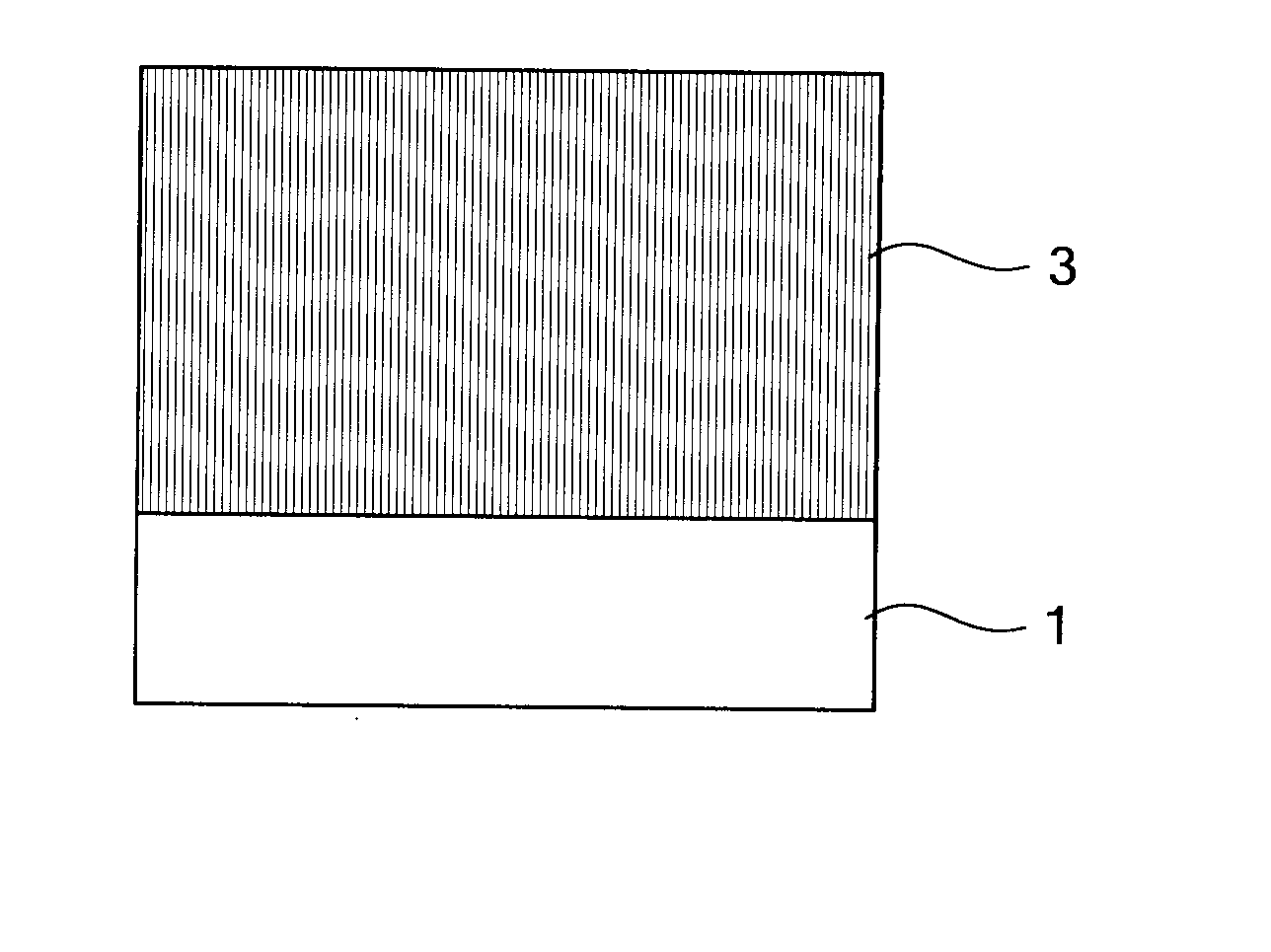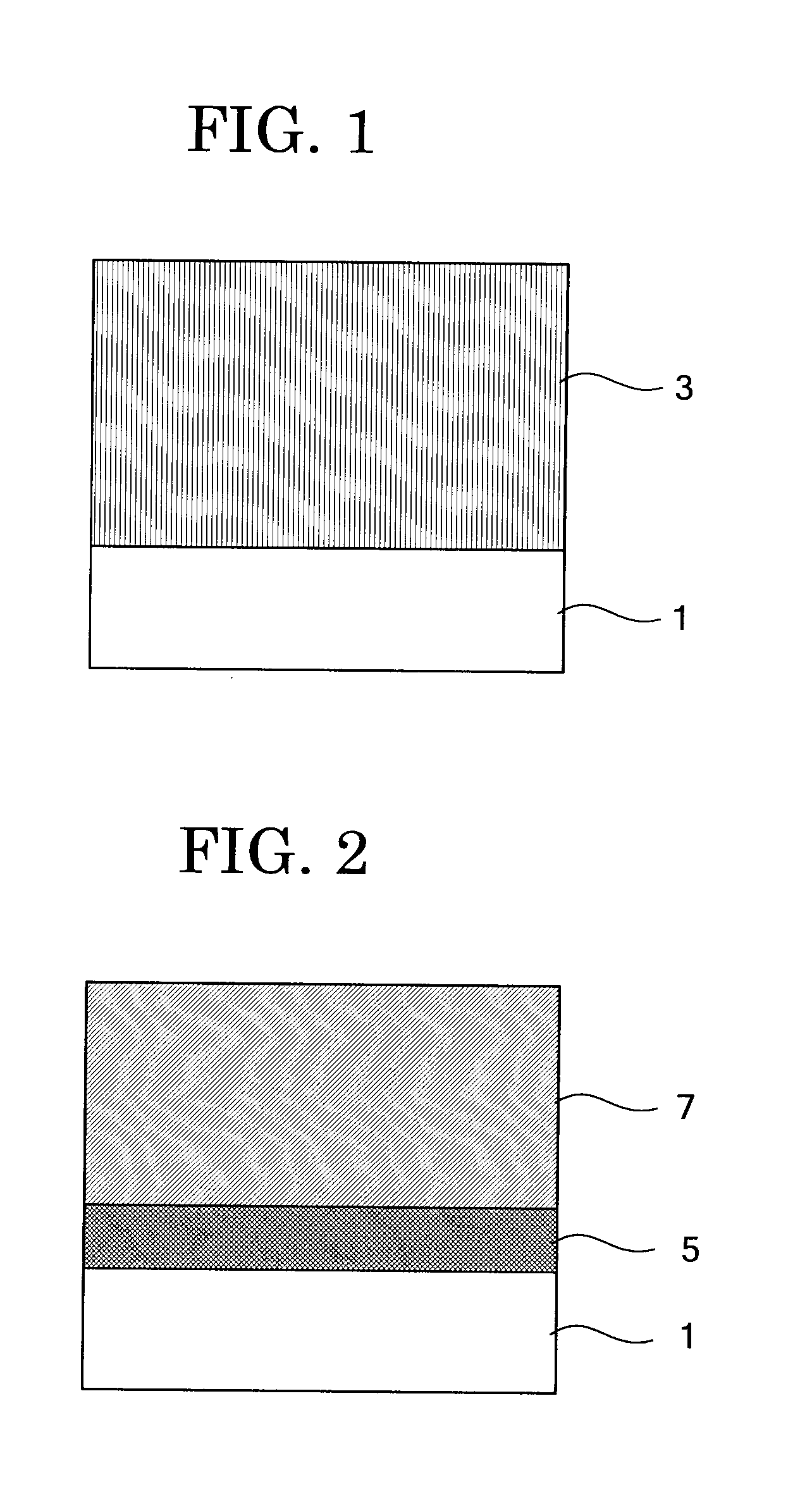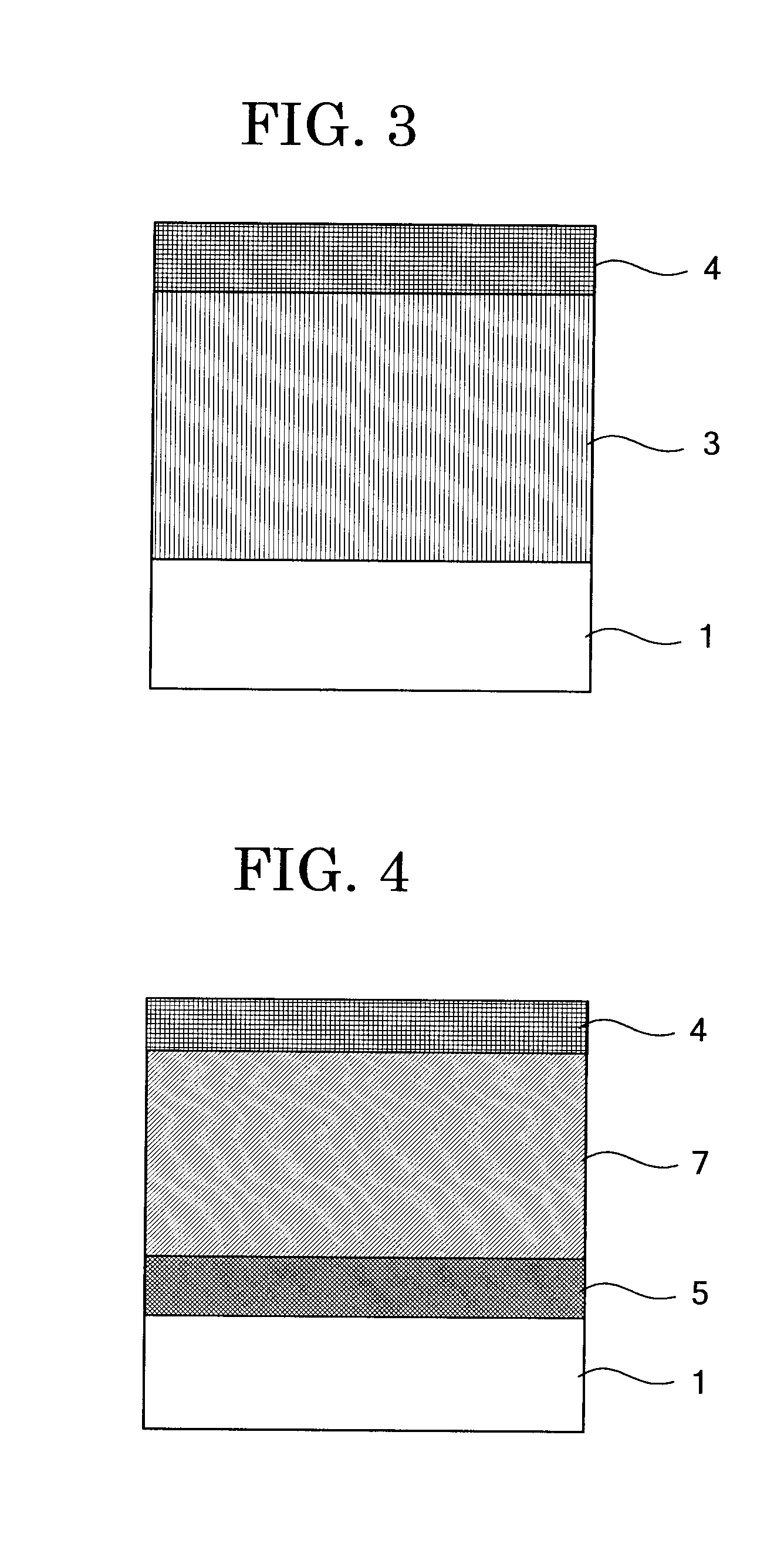Electrophotographic photoconductor, image forming method, image forming apparatus, and process cartridge
a photoconductor and electrochemical technology, applied in the field of electrochemical photoconductor, can solve the problems of limited compound addition amount, hardly responsive compound to high-sensitivity and high-speed recording, etc., and achieve the effect of stably forming high-quality images and high abrasion resistan
- Summary
- Abstract
- Description
- Claims
- Application Information
AI Technical Summary
Benefits of technology
Problems solved by technology
Method used
Image
Examples
production example 1
—Synthesis of Exemplified Compound No. 21—
(1) Synthesis of p-diethylaminophenethyl alcohol
[0305] In a four-aperture flask, 9.6 g (70 mmol) of p-aminophenethyl alcohol, 38.7 g (280 mmol) of potassium carbonate, and 100 mL of monochlorobenzene were poured, and the mixture was heated at 120° C. under an argon atmosphere with stirring. Then, 32.8 g (210 mmol) of ethyl iodide was delivered by drops into the mixture for 5 hours. Upon completion of the dripping, the mixture was further heated with stirring for 5 hours. The reaction solution was cooled to the room temperature and then diluted with dichloromethane, followed by washing with water three times. The dichloromethane solution was dried with anhydrous magnesium sulfate, the solvent was distilled away to purify the dichloromethane solution by silica gel chromatography using a mixture solvent of toluene / ethyl acetate (2 / 1) as an eluent to thereby synthesize 12.1 g (yield: 89% by mass) of p-diethylaminophenethyl alcohol.
(2) Synthesi...
production example 2
—Synthesis of Exemplified Compound No. 22—
(1) Synthesis of p-benzyl-ethylaminophenethyl alcohol
[0307] In a four-aperture flask, 9.6 g (70 mmol) of p-aminophenethyl alcohol, 38.7 g (280 mmol) of potassium carbonate, and 50 mL of dehydrated toluene were poured, and the mixture was heated at 100° C. under an argon atmosphere with stirring. Then, 10.9 g (70 mmol) of ethyl iodide was delivered by drops into the reaction solution for 3 hours. Upon completion of the dripping, the reaction solution was further heated with stirring for 1 hour. Into the reaction solution, 10.9 g (70 mmol) of benzyl chloride was delivered by drops for 30 minutes. Upon completion of the dripping, the reaction solution was further heated with stirring for 3 hours. The reaction solution was cooled to the room temperature and then diluted with toluene, followed by washing with water five times. The toluene solution was dried with anhydrous magnesium sulfate, and then the solvent was distilled away to purify the t...
production example 3
—Synthesis of Exemplified Compound No. 23—
(1) Synthesis of p-dibenzyl-aminophenethyl alcohol
[0309] In a four-aperture flask, 5.49 g (40 mmol) of p-aminophenethyl alcohol, 21.1 g (160 mmol) of potassium carbonate, and 20.3 g (160 mmol) of benzyl chloride were poured, and the mixture was heated at 135° C. under an argon atmosphere with stirring for 7 hours. Then, the reaction solution was cooled to the room temperature and then diluted with toluene, followed by washing with water three times. The toluene solution was dried with anhydrous magnesium sulfate, and then the solvent was distilled away to purify the toluene solution by silica gel chromatography using a mixture solvent of toluene / ethyl acetate (7 / 1) as an eluent to thereby synthesize 11.0 g (yield: 87% by mass) of p-dibenzyl-aminophenethyl alcohol.
(2) Synthesis of p-dibenzyl-aminophenethyl acrylate
[0310] In a three-aperture flask, 10.5 g (33 mmol) of p-dibenzyl-aminophenethyl alcohol, 9.51 g (132 mmol) of acrylic acid, 0.5...
PUM
 Login to View More
Login to View More Abstract
Description
Claims
Application Information
 Login to View More
Login to View More - R&D
- Intellectual Property
- Life Sciences
- Materials
- Tech Scout
- Unparalleled Data Quality
- Higher Quality Content
- 60% Fewer Hallucinations
Browse by: Latest US Patents, China's latest patents, Technical Efficacy Thesaurus, Application Domain, Technology Topic, Popular Technical Reports.
© 2025 PatSnap. All rights reserved.Legal|Privacy policy|Modern Slavery Act Transparency Statement|Sitemap|About US| Contact US: help@patsnap.com



